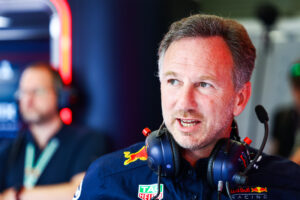Formula 1 sees a lot of money involved in the circus, with many bonuses for the teams and their drivers. But how the prize money work?
F1 requires a lot of money to keep the sport going. It also gives money to the different teams on the grid as a prize for their performances. Based on last year standings, the prize money for the 2023 grid is around $900 million. At the end of each season, the 10 teams will have a percentage of the sum.
Prize money for the Constructors
It has to be clear that Formula 1 gives the prize money to the teams and not to the drivers. The way the organization divides the sum is pretty simple, and it’s based on the performances. The team at the top of the Constructor Championship receives the highest share, the last team in the standings receives the lowest.
Following the eighth Concorde Agreement (2021), the gap between the first and the last in the Championship has decreased. In the past, the 1st received the 20% of the prize, the 10th only the 4th. Nowadays, the team at the top gets the 14% and the last one gets the 6% of the total.
All the teams signed the Agreement, and it’s going to last until 2025.
Naturally, F1 doesn’t disclose the details, but it seems clear that in the Concorde some bonuses are granted. Apparently, the team with only one Championship to its name gets a default bonus. On the other hand, the team with two or more Constructor titles gets a higher one.
Bonuses for the performance
As stated before, the drivers receive their wages from their teams. However, their contracts may have clauses that concede them some extra bonuses. Again, these are based on their performances during the season. If a driver is high in the standings or if he wins the World Champion Title, the team may allow him a share of the prize money. The bonus is then applied to their regular wage.
Three-time World Champion enters the chat 👑👑👑 #F1 pic.twitter.com/GBrbKu0f3P
— Oracle Red Bull Racing (@redbullracing) October 12, 2023
According to Marca, the Spanish newspaper, Max Verstappen has gained £31.5 million instead of £19.6 million after the controversial 2021 Championship.
Bonuses like this one are, of course, an incentive for the athletes to perform better, since their salary can grow substantially.
And how does the driver’s wage system work?
Of course, the details in each driver’s contract are reserved. However, there are some parameters that will influence the final sum.
First, experiences and reputation in F1. Naturally, drivers like Lewis Hamilton or Fernando Alonso, with a lot of years in the business and Titles to their names, are paid more than rookies. The seven time World Champion, apparently, has an income around $30 million per year. Rookies or drivers who work in smaller teams, gain around $1 million per year.
Teams budget is another thing that influences drivers’ paychecks. Bigger teams like Ferrari or Mercedes can offer more beneficial opportunities for their drivers. This is due to the amount of sponsorships and commercial agreements they have access to, which is obviously bigger than those of smaller teams.
Each driver, and their representatives, can negotiate the price of their salary. So, good negotiation skills are another important thing to possess before signing a contract for a Formula 1 team.
Lastly, those who have their own brand are more appealing to the sponsors. This consents them to sign more agreements, have their own merch and to represent the brands. It’s not unusual to see drivers like Charles Leclerc pose for brands such as RayBan or APM Monaco, or drivers with their own merch like Lando Norris and Quadrant.
We created something to celebrate @quadrant, and it’s out now if you want it 🙂https://t.co/nTL7WV1ZA1 #ad pic.twitter.com/cOeTcHY4Yo
— Lando Norris (@LandoNorris) September 27, 2023






